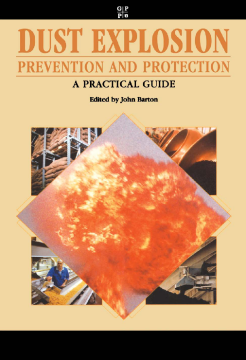
Additional Information
Book Details
Abstract
Originally published in three volumes by the Institution of Chemical Engineers from 1985 to 1988, this guide formed the first authoritative and comprehensive guide for dust explosion prevention and protection for engineers, scientists, safety specialists, and managers. This guide is a compilation of current best practices for measures to prevent dust explosions from occurring, and, if they do occur, to protect the plant and personnel from their destructive effects by applying the techniques of explosion containment, explosion suppression, and explosion venting.
Included is new material on the containment and venting of dust explosions. This guide helps those responsible for the design, supply, and operation of process plants to comply with the provisions of health and safety legislation. Dust explosions can occur anywhere where combustible powders are handled, such as coal, wood, flour, starch, sugar, rubber, plastics, some metals, and pharmaceuticals.
- Three classic volumes combined into one handy guide
- Contains all of the best practices for preventing dust explosionsIncludes in-depth material that outlines how to protect the plant and its resources from explosions
...brings together the latest research results and recommendations for safe practice in the handling of explosible dusts and will undoubtedly become the new bible for practitioners, both equipment manufacturers and users, in this field. -Richard Roberts, tce-July 2002
The strength of the guide comes in its use of logic diagrams to help the reader identify the relevant aspects for particular situations. -Richard Roberts, tce-July 2002
...the authors are to be congratulated on maintaining the ICHemE tradition of producing guidance in an easily readable and practical form. For anyone involved with dust explosion prevention and protection, whether new to the topic or existing practitioners, this book is a must.
-Richard Roberts, tce-July 2002
